
poetry in action features work by poets from around the world, translated into English.
It has three rallying cries:
Poets of the world, unite and take over!
Resist the oppressive constraints of good, publishable poetry established by mainstream literary venues!
Only poetry in translation, all the time!
Coming at you every 10th and 20th of each month.
WULF OND EADWACER
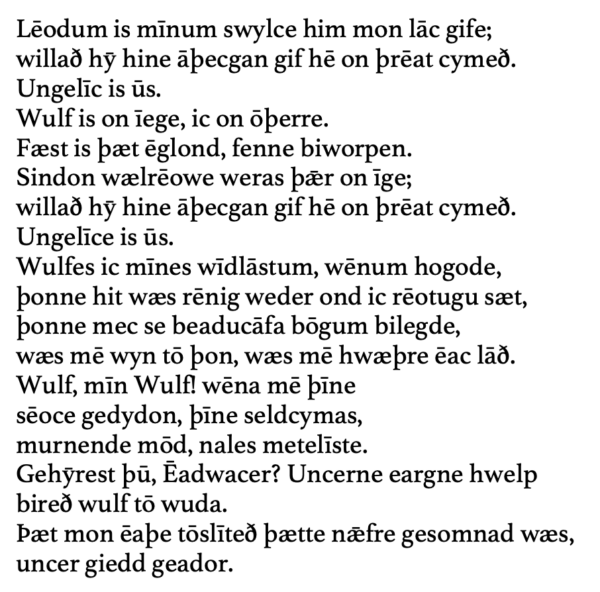
O
O
O
O
O
O
O
O
O
O
O
O
O
O
O
& [UNGELĪC]
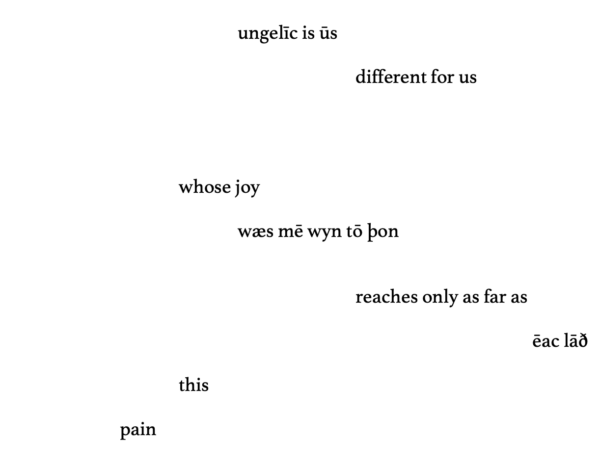
O
O
O
O
O
O
O
O
O
O
O
O
O
O
O
& [ON OUTLAWED LOVE]
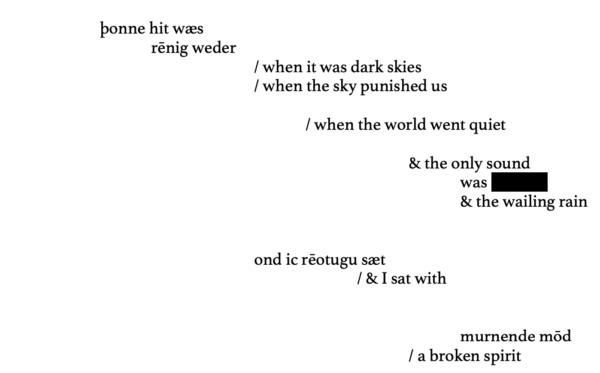
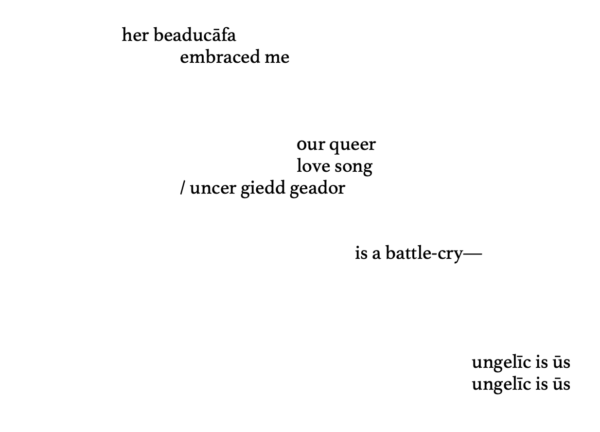
O
O
O
O
O
O
O
O
O
O
O
O
O
O
O
& [UNGELĪCE]

O
O
O
O
O
O
O
O
O
O
O
O
O
O
O
WULF BLOOD
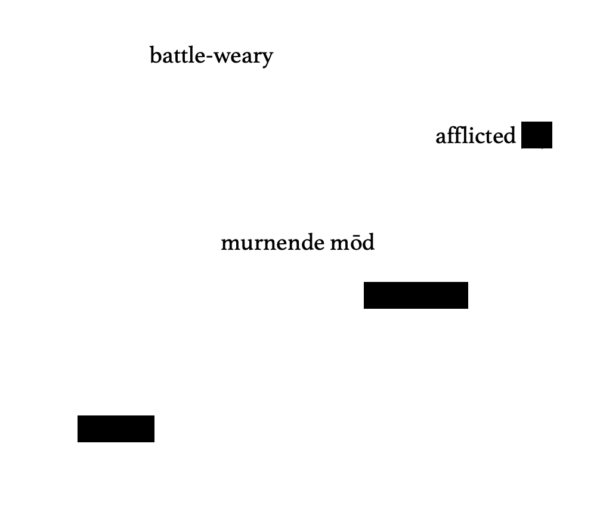
O
O
O
O
O
O
O
O
O
O
O
O
O
O
O
& [MIN GIEDD / EARMNE HWELP]
![]()
The Anonymous pre-10th c. Anglo-Saxon Feminist
What we know of the poet who composed the Anglo-Saxon text commonly referred to as “Wulf ond Eadwacer” is very limited. Though unnamed in the poem, we can discern from the feminine inflection on the words “rēotugu” and “sēoce” that the speaker is a woman. It is possible, though perhaps implausible, that the poet is male, but even so, because the poem describes and laments a forbidding set of circumstances foisted onto the female speaker by a patriarchal Anglo-Saxon culture, the poet—who may have been Scandinavian or Anglo-Saxon and lived some time before the 10th c.—was undoubtedly a feminist, an outsider, and a radical poet, who mixed forms from both Anglo-Saxon and Scandinavian, subverting the literary conventions of each language culture in sophisticated and surprising ways.

M.L. Martin
M.L. Martin is an interdisciplinary poet and translator whose current work in translation aims to revise the critical interpretation and reception of the enigmatic Anglo-Saxon poem known as “Wulf and Eadwacer,” and to recover this radical female text to the feminist and experimental canons to which it belongs. Her translations can be found in Arkansas International, Black Warrior Review, Brooklyn Rail In Translation, The Capilano Review, Columbia Journal, The Kenyon Review Online, The Literary Review, and elsewhere. Her chapbook, Journey to Shoshone Falls (Walls Divide Press), uses archival images, found text, and translations to create textual interventions in the archival landscape around the canonical Thomas Moran painting “Shoshone Falls on the Snake River.” Her poetry appears in Denver Quarterly, The Fiddlehead, Interim, The Massachusetts Review, PRISM international, and elsewhere. To read more from her, visit M-L-Martin.com
poetry in action is an Action Books blog feature curated and edited by Katherine M. Hedeen (@kmhedeen) with web editing by Paul Cunningham.
